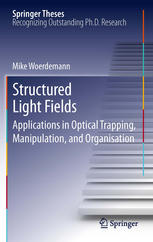

Most ebook files are in PDF format, so you can easily read them using various software such as Foxit Reader or directly on the Google Chrome browser.
Some ebook files are released by publishers in other formats such as .awz, .mobi, .epub, .fb2, etc. You may need to install specific software to read these formats on mobile/PC, such as Calibre.
Please read the tutorial at this link: https://ebookbell.com/faq
We offer FREE conversion to the popular formats you request; however, this may take some time. Therefore, right after payment, please email us, and we will try to provide the service as quickly as possible.
For some exceptional file formats or broken links (if any), please refrain from opening any disputes. Instead, email us first, and we will try to assist within a maximum of 6 hours.
EbookBell Team

5.0
30 reviewsThe optical trapping of colloidal matter is an unequalled field of technology for enabling precise handling of particles on microscopic scales, solely by the force of light. Although the basic concept of optical tweezers, which are based on a single laser beam, has matured and found a vast number of exciting applications, in particular in the life sciences, there are strong demands for more sophisticated approaches. This thesis gives an introductory overview of existing optical micromanipulation techniques and reviews the state-of-the-art of the emerging field of structured light fields and their applications in optical trapping, micromanipulation, and organisation. The author presents established, and introduces novel concepts for the holographic and non-holographic shaping of a light field. A special emphasis of the work is the demonstration of advanced applications of the thus created structured light fields in optical micromanipulation, utilising various geometries and unconventional light propagation properties. While most of the concepts developed are demonstrated with artificial microscopic reference particles, the work concludes with a comprehensive demonstration of optical control and alignment of bacterial cells, and hierarchical supramolecular organisation utilising dedicated nanocontainer particles.